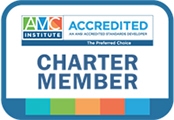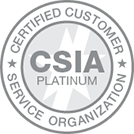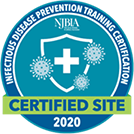by Kimberly Turner Quevedo, Editor
Print? Digital? A combination of both? These are the questions associations often think about when it comes to bringing news and publications to members, and a lot of factors play into the final decision.
In particular, as an effort to curb costs, the American Society of Hand Therapists (ASHT), who produced a print quarterly member publication (ASHT Times), decided to move this to a PDF-formatted publication, which was emailed to members. The association soon found, through feedback from members, it was not user-friendly.

The Problem
While URLs were hyperlinked, the PDF had limited options for optimization. In addition, readers had to scroll through the publication, which often ran more than 20 pages in length. This was especially clunky for readers who wanted to skip to pages in the middle or at the end of the publication, as they had to scroll through many pages before reaching the article they wanted to read. In addition, readers on mobile devices had difficulty reading the publication because the PDF wasn’t optimized for mobile viewing.
Another challenge was that readership metrics were not available for the PDF edition, posing a problem for advertisers who were interested in knowing more about the publication’s readership and engagement. While ASHT was able to report on the opens and clicks from the email sent to members, it did not know how many members read the publication, if they were reading it fully and what they were reading. This lack of data limited the appeal of the publication to advertisers.
The Solution
In an effort to better serve members, ASHT decided to move the PDF format into a digital-platform format (with a special once-peryear print edition). In addition, a link to the publication is hosted on the ASHT website. The platform ASHT chose not only hyperlinked URLs and email addresses, but allowed the organization to embed other rich media, such as video, and create a clickable table of contents, eliminating the inconvenient scrolling option. With this new format, readers could click the title of an article from the table of contents and be taken directly to it.
The digital publication was also optimized for mobile viewing, allowing readers to easily access the publication through a wireless Internet signal on smartphones and tablets, or readers could download the issue for offline viewing.

In addition to a much friendlier reader experience, ASHT was able to capture valuable readership data, including how many times the issue was viewed, what pages visitors were viewing, how many pages were being printed, how many PDFs of the entire issue were being downloaded, what links were clicked and, even, how many social shares there were of the publication. This data helped ASHT evaluate what readers enjoyed and valued about the publication and develop a strategy to continue to provide that content or provide more of it.
Results
The first issue of this digital-platform publication was a success, not only in delivering metrics to ASHT, but for readers too. “I was inspired to spend more time reading the ASHT Times given the new digital format,” said ASHT member Heidi Hermann Wright. Members, like Mary Lynn Jacobs and Gary Solomon, also found it was a lot more user-friendly and allowed the opportunity to quickly read and search the valuable content. The digital format helped enhance this valuable member benefit.




